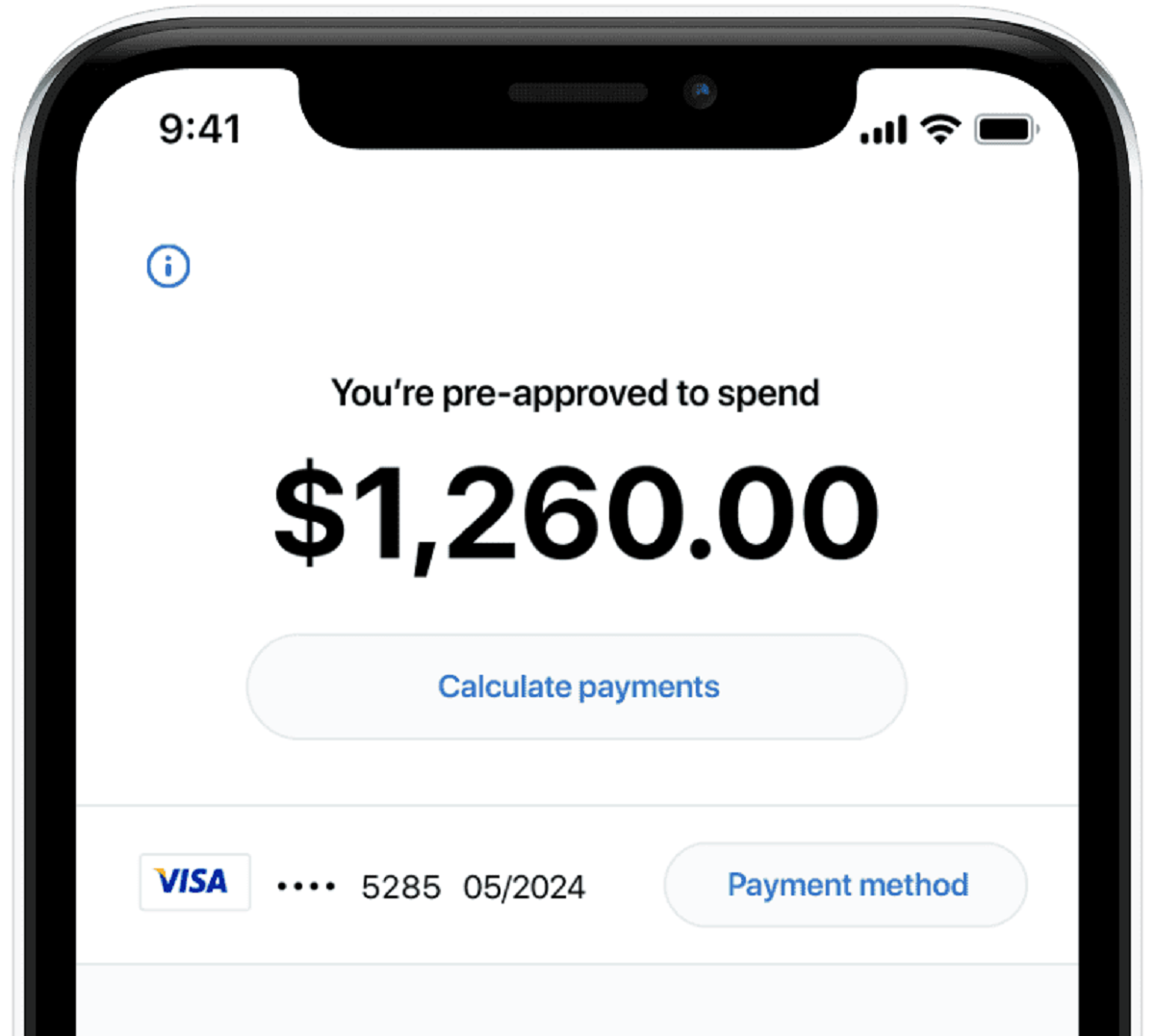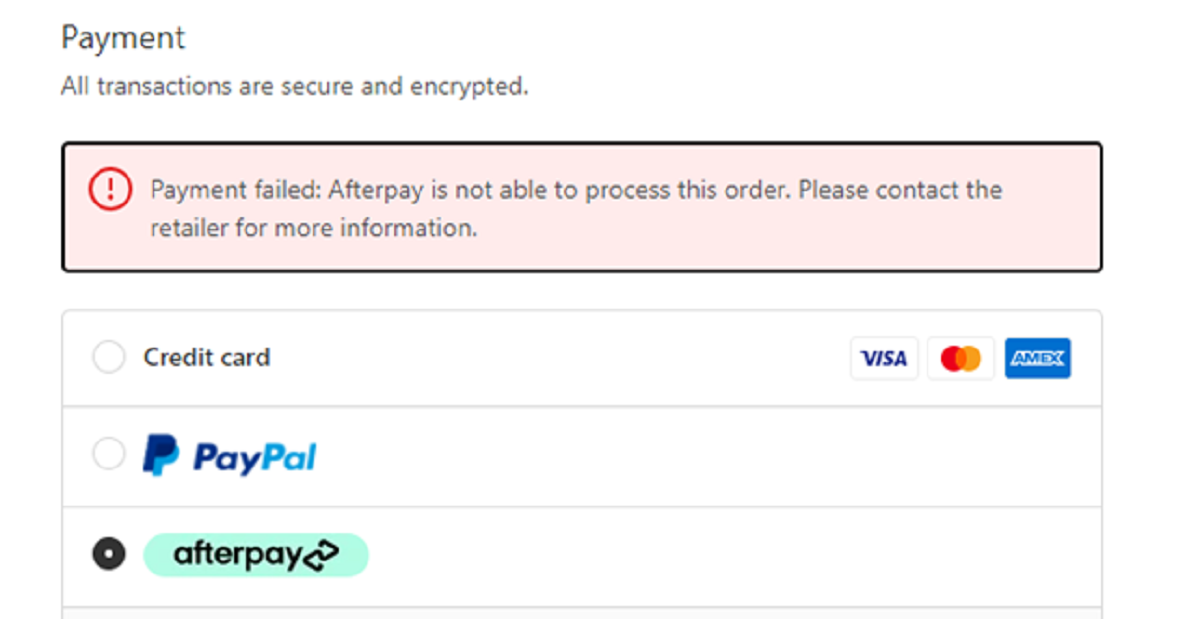Introduction
Afterpay, a popular “buy now, pay later” service, has gained significant traction in recent years. With its convenient payment structure and promises of no interest or fees, it has attracted a large number of customers seeking a more flexible shopping experience. However, while Afterpay may seem enticing at first glance, it is important to understand the potential pitfalls and negative consequences associated with this payment option.
In this article, we will delve into the various reasons why Afterpay can be detrimental to your financial well-being. From the increase in impulsive buying to potential debt accumulation and negative impact on credit scores, there are numerous drawbacks that consumers should be aware of before indulging in the allure of Afterpay.
While it is true that Afterpay can provide a temporary relief from upfront payment obligations, it is essential to consider the long-term consequences of using this service. By understanding the downsides, you can make an informed decision about whether Afterpay is truly beneficial or if it has the potential to lead you down a path of financial instability.
In the following sections, we will analyze the negative aspects of Afterpay in greater detail, shedding light on the risks and dangers that may arise from its usage. It is crucial to be aware of these factors before making any decisions regarding your purchases and financial well-being.
So, without further ado, let us explore the reasons why Afterpay may be more harmful than advantageous in the long run.
Increase in Impulsive Buying
One of the significant downsides of using Afterpay is the increase in impulsive buying behavior. The convenience and accessibility of this payment option can tempt consumers to make purchases on a whim, without careful consideration of their actual needs or budget.
With Afterpay, customers have the ability to quickly and easily purchase items without immediately paying the full cost. This can create a false sense of affordability and lead to impulsive buying decisions. Consumers may be more inclined to add unnecessary items to their shopping cart or purchase items they cannot afford in the long run.
Additionally, the installment-based payment structure of Afterpay can mask the true cost of an item. Instead of paying the full price upfront, customers only need to make small, manageable payments over time. This can make expensive items seem more affordable and encourage individuals to make purchases they would otherwise hesitate or think twice about.
Moreover, the convenience of Afterpay can contribute to a sense of instant gratification. Instead of waiting to save up for a desired item, Afterpay allows consumers to receive it immediately and pay for it later. This can lead to impulsive decisions driven by the desire for immediate satisfaction, rather than thoughtful consideration of the item’s value or necessity.
Overall, Afterpay can fuel impulsive buying behavior due to its accessibility, installment-based payments, and convenient nature. It is important for consumers to be mindful of their purchasing habits and exercise restraint when using this payment option to avoid falling into the trap of impulsive spending.
Potential Debt Accumulation
Another key concern with using Afterpay is the potential for debt accumulation. While the payment structure may seem manageable on the surface, the accumulation of multiple payments over time can quickly add up and lead to financial strain.
Afterpay allows customers to divide their purchases into several installments, typically over a period of 6 to 8 weeks. While this may appear manageable at first, it’s important to consider the cumulative effect of multiple purchases made using Afterpay. If a consumer is consistently utilizing Afterpay for various items, they may find themselves juggling numerous payments simultaneously.
This can become particularly problematic if unexpected expenses arise or if the consumer’s financial situation changes during the payment period. In such cases, individuals may find it difficult to meet all their financial obligations, leading to missed payments, late fees, and potentially spiraling debt.
Furthermore, Afterpay does not conduct extensive credit checks or assess an individual’s financial capability to repay. This lack of scrutiny can enable consumers to accumulate more debt than they can afford, especially if they already have existing financial commitments.
It’s important to remember that while Afterpay may claim to be interest-free, missed or late payments can incur fees and charges. These additional costs can further increase the debt burden for consumers, potentially putting them in a challenging financial situation.
Overall, the ease of using Afterpay can create a false sense of affordability and lead to the accumulation of debt. Consumers should carefully evaluate their financial situation and assess their ability to make timely payments before opting for this payment option to avoid the potential dangers of debt accumulation.
High Interest Rates and Late Fees
While Afterpay may market itself as an interest-free payment option, it is important to note that there can still be financial consequences if payments are not made on time. Late or missed payments can result in high interest rates and late fees, making the overall cost of the purchase significantly higher than anticipated.
Afterpay’s business model hinges on the notion that customers will make their payments on time. However, if a payment is missed, Afterpay will charge a late fee, typically around $10 to $15, depending on the total purchase amount. This late fee can quickly add up if multiple payments are missed or delayed.
In addition to the late fees, Afterpay also imposes high interest rates on outstanding balances. If a customer fails to repay the full balance by the due date, an interest rate of around 20% may be applied, resulting in additional costs that can further strain finances.
It’s important for consumers to carefully review the terms and conditions of Afterpay, including the potential fees and interest rates that may apply. Awareness of these charges can help individuals make informed decisions about their purchases and assess whether the convenience of Afterpay is worth the potential financial burden.
Furthermore, it’s crucial to consider the impact of high interest rates and late fees on the overall affordability of the items purchased. If the added costs make the item significantly more expensive than its retail price, it may be wise to reconsider the purchase or explore alternative payment methods.
Ultimately, while Afterpay may initially appear to offer interest-free payments, it’s important to be mindful of the potential financial repercussions if payments are not made on time. Understanding the fees and interest rates associated with Afterpay can help individuals make responsible financial decisions and avoid unnecessary expenses.
Negative Impact on Credit Score
Using Afterpay can have a negative impact on your credit score, which can have repercussions for your financial future. While Afterpay does not conduct a credit check when approving customers, late or missed payments can still negatively affect your creditworthiness.
When you make a purchase through Afterpay, they report your payment history to credit bureaus. If you consistently make your payments on time, it can have a positive impact on your credit score. However, if you miss payments or make them late, it can lower your credit score and signal to lenders that you may be a higher risk borrower.
Even though Afterpay does not charge interest on their payments, lenders still view using this service as a form of debt. Just like any other type of debt, missed or late payments can be seen as a red flag by lenders, potentially making it more difficult for you to secure loans or credit in the future.
Additionally, if you use Afterpay frequently and have a high outstanding balance, it can impact your debt-to-income ratio. Lenders consider this ratio when evaluating your creditworthiness, and having a high amount of outstanding debt can be seen as a negative factor.
It’s important to note that even if you have a good credit score prior to using Afterpay, any negative marks resulting from late or missed payments can hinder your ability to obtain favorable credit terms in the future. This can affect your ability to secure a mortgage, car loan, or even a credit card with competitive interest rates.
Therefore, it is essential to carefully consider your financial situation and ensure that you can make timely payments before using Afterpay. Keeping a close eye on your payment schedule and maintaining a positive payment history will help protect your credit score and overall financial health.
Lack of Financial Discipline
Another aspect to consider when using Afterpay is the potential lack of financial discipline that can arise from this payment option. While Afterpay may offer convenience and flexibility, it can also make it easier to overspend and neglect proper budgeting.
With Afterpay, the ability to make purchases without immediate full payment can create a false sense of financial security. This can lead to a lack of strict budgeting and financial discipline, as consumers may rely on Afterpay as a way to defer the consequences of their spending habits.
Without the immediate impact of paying with cash or making a full payment upfront, individuals may be less inclined to evaluate their purchases critically or consider the long-term financial implications. This lack of financial discipline can lead to unnecessary and excessive spending, contributing to a cycle of debt and financial instability.
Moreover, the ease of setting up an Afterpay account and the absence of extensive credit checks can make it tempting for individuals with poor financial discipline to continue making purchases without proper consideration of their financial means.
It’s important to recognize that using Afterpay should not be a substitute for responsible financial management. Establishing a budget, tracking expenses, and evaluating the necessity of purchases are essential components of maintaining healthy financial habits.
By relying on Afterpay as a regular means of payment, consumers may become disconnected from the true cost of their purchases and find it difficult to exert control over their spending habits. Developing and maintaining financial discipline is crucial to avoiding financial stress and achieving long-term financial stability.
While Afterpay can be a convenient payment option, individuals must exercise caution and ensure they remain diligent in their financial decision-making processes.
Encouragement of Overspending
Afterpay, with its “buy now, pay later” model, can inadvertently encourage overspending. The ease and accessibility of this payment option may tempt consumers to make purchases beyond their means or without careful consideration of their budget.
The allure of Afterpay lies in the ability to acquire desired items immediately, without the need for immediate full payment. This instant gratification can lead individuals to make impulsive buying decisions and purchase items they may not have otherwise considered or can truly afford.
With Afterpay, the installment-based payment structure can also distort the perceived true cost of items. By breaking down the total amount into smaller, manageable payments, consumers may underestimate the financial impact of their purchases and justify spending more than they would if paying the full amount upfront.
Moreover, the marketing strategies employed by Afterpay and the participating merchants often emphasize the affordability and convenience of their payment option. This can create a culture of impulsive and excessive spending, where individuals are constantly enticed to add more items to their virtual shopping carts.
Furthermore, Afterpay’s “shopping with indulgence” mentality can blur the boundaries between needs and wants. Consumers may be more inclined to indulge in unnecessary purchases, driven by the notion that they can always pay later. This lack of financial restraint can lead to a cycle of overspending that can be difficult to break.
It is crucial for individuals to assess their actual needs and exercise self-control when using Afterpay. Setting limits, creating a budget, and evaluating the necessity and affordability of purchases are essential practices to avoid falling into the trap of overspending.
While Afterpay may offer convenience and deferred payment, it is essential to remember that responsible spending habits are crucial for long-term financial well-being. Recognizing the potential for overspending and taking proactive measures to curb impulsive buying can help individuals maintain control over their finances and avoid unnecessary debt.
Limited Purchase Choices
While Afterpay may provide a convenient payment option for certain purchases, it is important to note that not all retailers or online platforms offer this service. This can significantly limit the range of items available for purchase through Afterpay.
Afterpay has partnerships with specific retailers and online merchants, meaning that only those businesses who have signed up for Afterpay are eligible for customers to make purchases using the payment option. This means that if a consumer wants to buy something from a retailer that does not support Afterpay, they will have to explore alternative payment methods or seek out another retailer that does offer Afterpay.
This limited availability can be frustrating and may result in consumers compromising on their desired choices or settling for different products or brands simply because they are available through Afterpay. This can restrict freedom of choice and make it more difficult to find the exact item or brand that a consumer desires.
In addition, some retailers may impose limits on the dollar amount that can be paid using Afterpay or restrict certain categories of items from being eligible for purchase through the service. This further adds to the limiting factors that consumers may face when utilizing Afterpay.
It is important for consumers to carefully consider their shopping preferences and verify whether the retailers they most frequently patronize are part of the Afterpay network. This can help individuals determine if the convenience of Afterpay outweighs the limitation it may impose on their purchase choices.
Moreover, individuals who prefer to shop from small businesses or independent sellers may find their options severely restricted when using Afterpay. Many smaller businesses do not have the resources or infrastructure to integrate Afterpay into their payment systems, further limiting the variety of products available for purchase through this service.
While Afterpay may offer convenience for certain purchases, it is crucial for consumers to take into account the limited availability of the service and assess whether it aligns with their shopping preferences and purchasing needs.
Expensive Returns and Exchanges
Another drawback of using Afterpay is the potential for expensive returns and exchanges. When a customer decides to return or exchange an item purchased through Afterpay, they may encounter additional costs and complications that can make the process more burdensome and costly.
Unlike traditional payment methods where a refund or exchange can be processed directly, returning an item purchased through Afterpay requires coordination between the merchant and Afterpay. This can introduce delays and additional steps in the return process, potentially resulting in frustration and unwanted expenses.
In some cases, the merchant may not offer a full refund for the item returned. Instead, they may offer store credit or a partial refund, leaving the customer with less financial flexibility and a limited ability to recoup their original payment.
Furthermore, the terms and conditions of Afterpay state that the consumer remains responsible for making all installment payments, even if an item is returned or exchanged. This means that individuals may still be required to make payments on an item they no longer possess or wish to keep, further increasing the financial burden.
Additionally, if a customer decides to exchange an item for a different product or size, the process may become more complicated. The availability of Afterpay for the desired exchange item may vary, potentially requiring additional payment methods or the need to choose a different item altogether.
It’s important for individuals to carefully read the return and exchange policies of both the merchant and Afterpay before making a purchase. Understanding the potential costs and complications involved in returns and exchanges can help consumers make more informed decisions and avoid unexpected expenses.
In some cases, consumers may find that the costs and potential hassles associated with returning or exchanging items purchased through Afterpay outweigh the benefits of using this payment option. It is crucial to evaluate the return policies and additional fees beforehand to minimize any potential financial drawbacks.
Impact on Small Businesses
While Afterpay may offer convenience and flexibility for consumers, it can have a significant impact on small businesses. The fees and financial arrangements associated with Afterpay can potentially affect the profit margins and cash flow of smaller merchants.
When a customer chooses to use Afterpay to make a purchase, the merchant receives the payment from Afterpay upfront, minus the fees charged by the service. These fees can range from 4-6% of the total purchase value, which can eat into the profit margins of small businesses.
For smaller merchants who already operate on tight margins, the additional fees imposed by Afterpay can be a significant financial burden. These fees may significantly impact their ability to reinvest in their business, expand their product offerings, or provide competitive pricing.
Furthermore, the delayed payment structure of Afterpay means that small businesses have to wait for the full payment to be received. This can affect their cash flow and create challenges in managing day-to-day operations and covering expenses such as inventory, rent, or employee salaries.
In addition, the integration process for Afterpay can be complex and time-consuming for small businesses, requiring the implementation of new systems or the integration of existing payment systems. The resources and effort required for this integration can divert the focus of small businesses away from other critical aspects of their operations.
Moreover, the popularity of Afterpay and its appeal to consumers may inadvertently create a situation where customers prioritize merchants that offer this payment option over those that do not. This can result in a disadvantage for small businesses that are unable or choose not to implement Afterpay as part of their payment options.
While Afterpay may offer benefits to consumers, it is essential to recognize the potential impact it can have on the sustainability and success of small businesses. Consumers should consider supporting local merchants and exploring alternative payment options to ensure the health and diversity of the small business ecosystem.
Conclusion
Afterpay has become a widely popular payment option, offering convenience and flexibility to consumers. However, it is crucial to weigh the drawbacks and potential consequences associated with using this service. From the increase in impulsive buying and the potential accumulation of debt to high interest rates and late fees, Afterpay poses several risks to your financial well-being.
Additionally, Afterpay can have a negative impact on your credit score and discourage financial discipline. It may also limit your purchase choices and result in expensive returns and exchanges. Furthermore, it is important to consider the implications for small businesses, as Afterpay’s fees and financial arrangements can potentially impact their profitability.
While Afterpay may seem tempting with its promises of deferred payment and convenience, it is essential to be mindful of the potential pitfalls. It is crucial to remain vigilant about your financial decisions, practice responsible spending habits, and carefully evaluate the true cost of your purchases.
Consider alternative payment methods that align with your financial goals and priorities. Prioritize financial discipline, develop a budget, and carefully track your expenses to avoid falling into the trap of overspending and accumulating unnecessary debt.
Ultimately, it is crucial to strike a balance between enjoying the convenience of Afterpay while maintaining financial stability. Taking a proactive approach to your financial well-being will help you make informed decisions and protect your long-term financial health.

























